William Golding’s Lord of the Flies is a gripping tale of survival and human nature. The novel explores how young boys stranded on an island descend into chaos, revealing darker aspects of society. Available in PDF and other formats, it remains a timeless classic, offering profound insights into fear, power, and civilization’s fragility.
Overview of the Novel
Lord of the Flies, written by William Golding, is a thought-provoking novel about British schoolboys stranded on a deserted island. The story explores their attempts to create order and survive, revealing the inherent flaws in human nature. Available in various formats, including PDF, the book has become a classic, offering insights into themes like civilization, savagery, and moral decay. Its gripping narrative and deep symbolism make it a widely studied and downloadable literary masterpiece, accessible to readers worldwide in formats like PDF, ePub, and more.
Author Background: William Golding
William Golding, a Nobel Prize-winning British author, was born in 1911 in Cornwall, England. Before becoming a writer, he worked as a teacher and served in the Royal Navy during World War II. His experiences shaped his writing, particularly Lord of the Flies, which reflects his deep understanding of human nature. Golding’s inspiration for the novel came from two vivid images: a boy standing on his head in the sand and another with a skull on a stake. This exploration of civilization versus savagery remains a cornerstone of his legacy, making his works timeless and universally relevant.
Historical Context and Publication
Lord of the Flies was published in 1954 by Faber and Faber, marking William Golding’s literary breakthrough. The novel gained widespread recognition for its exploration of human nature and society, becoming a modern classic. Set against the backdrop of post-war societal upheaval, the book resonated with its critique of civilization. An alternate version of the novel is now being displayed to celebrate its 70th anniversary, showcasing its enduring relevance. The book remains widely popular, with PDF and e-book formats ensuring its accessibility to new generations of readers worldwide.

Plot Summary
Lord of the Flies follows British schoolboys stranded on a deserted island after a plane crash. They attempt to govern themselves, descending into chaos and savagery, revealing humanity’s darker instincts.
The Sound of the Shell: Chapter 1
In the opening chapter, a group of British schoolboys, survivors of a plane crash, discover a conch shell on a deserted island. Ralph, the protagonist, uses the shell to summon the boys, establishing a sense of order. The conch becomes a symbol of authority and democracy, allowing the boys to speak in turn. The chapter introduces key characters like Jack Merridew, whose desire for power emerges early. The boys’ initial cooperation and excitement contrast with the looming threat of savagery, setting the stage for the novel’s exploration of human nature.
Fire on the Mountain: Chapter 2
In Chapter 2, the boys attempt to build a fire to signal for rescue, showcasing their resourcefulness and initial unity. Ralph’s leadership is tested as he struggles to maintain order. The fire becomes a symbol of hope and civilization. However, tensions rise as Jack’s obsession with hunting grows, foreshadowing future conflicts. The chapter highlights the boys’ reliance on teamwork and their primitive instincts, setting the stage for the gradual decline of their civilized behavior. The fire’s success brings temporary joy but also reveals underlying divisions.
Huts on the Beach: Chapter 3
Chapter 3 explores the boys’ efforts to build shelters, reflecting their creativity and adaptation to island life. The construction of huts symbolizes their attempt to create order and comfort. However, their excitement leads to neglect of the signal fire, emphasizing their innocence and lack of foresight. Ralph’s leadership is challenged as chaos arises, while Jack’s growing fascination with hunting hints at his primal instincts. The chapter reveals the tension between civilization and savagery, as the boys’ priorities begin to shift, foreshadowing future conflicts.
Painted Faces and Savagery
In this chapter, the boys’ primal instincts intensify as they embrace savagery. Jack begins painting his face, symbolizing his detachment from civilization and embrace of hunting. The act of painting becomes a ritual, fostering a sense of anonymity and liberation from moral constraints. This transformation reflects the group’s decline into chaos and fear, as their civilized behavior erodes. The painted faces also heighten paranoia, blurring the line between hunter and prey. The chapter underscores the theme of humanity’s innate capacity for savagery when societal norms are stripped away.
Themes in “Lord of the Flies”
The novel explores human nature, societal structures, and the impact of fear and power. It examines civilization’s collapse, revealing mankind’s inherent savagery and moral decay.
Human Nature and Society
In Lord of the Flies, Golding examines the duality of human nature, revealing how societal norms mask inherent primal instincts. The novel portrays a group of boys descending from civility to savagery, highlighting the fragility of social structures. Through their behavior, Golding critiques the idea of inherent human goodness, suggesting that without societal constraints, individuals revert to survival instincts. The boys’ inability to maintain order reflects the tension between individual desire and collective responsibility, underscoring the dark aspects of human nature when societal rules are removed.
Fear, Power, and Control
Fear, power, and control are central themes in Lord of the Flies, as the boys’ behavior evolves under isolation. Jack manipulates fear of the “beast” to gain power, while Ralph struggles to maintain control through reason. The conch shell initially symbolizes democratic order, but its influence wanes as fear and savagery dominate. Golding illustrates how fear can be weaponized to exert control, leading to a shift from collective safety to individual dominance. This dynamic reveals the darker aspects of human nature when authority is contested and morality fades.
Civilization vs. Savagery
In Lord of the Flies, the struggle between civilization and savagery is a dominant theme. The novel portrays boys who attempt to create a civilized society but gradually descend into primal behavior. Symbols like the conch shell represent order, while hunting and violence symbolize savagery. Ralph embodies civilization’s ideals, while Jack’s desire for power and control leads to chaos. The island’s isolation reveals how quickly societal norms can erode, exposing humanity’s innate capacity for savagery. This conflict underscores Golding’s exploration of human nature’s duality.
Morality and Ethics
Lord of the Flies explores morality and ethics through the boys’ actions and decisions. Piggy and Simon represent moral reasoning and truth, advocating for fairness and justice. The conch shell symbolizes democracy and equality, while Jack’s obsession with hunting reflects a disregard for ethical constraints. The novel highlights how morality is a fragile construct, easily abandoned without societal norms. Golding illustrates that ethical behavior is learned, not innate, and that fear and power can erode moral principles, leading to devastating consequences.
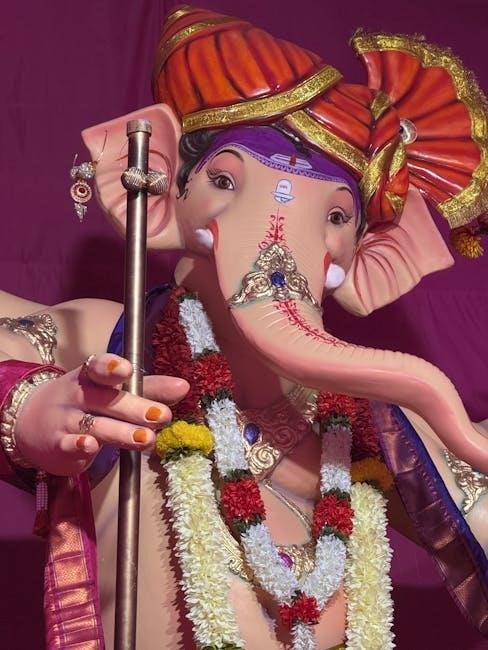
Characters Analysis
The novel’s characters, like Ralph, Jack, Piggy, and Simon, undergo significant development, revealing their inner conflicts and societal roles. Their interactions highlight human nature’s complexity.
Protagonist: Ralph
Ralph, the protagonist, embodies leadership and civility, as he strives to maintain order and ensure rescue. His youthful idealism contrasts with the chaos around him. Initially chosen as leader due to his charm and responsibility, Ralph represents democracy and the rule of law, symbolized by the conch shell. However, as the novel progresses, Ralph faces internal conflict and the erosion of his authority, highlighting his vulnerability and the challenges of maintaining morality in isolation. His journey reflects the struggle between civilization and primal instincts, ultimately revealing a deeper understanding of human nature.
Antagonist: Jack Merridew
Jack Merridew, the antagonist, represents savagery and the desire for power. Initially, he leads the choir but soon becomes obsessed with hunting, symbolizing his primal instincts. His rivalry with Ralph escalates, reflecting the clash between civility and brutality. Jack’s charisma and manipulation lead others to join him, forming a tribe that indulges in violence and chaos. His descent into savagery highlights the breakdown of moral constraints, embodying the darker aspects of human nature and the lure of unchecked power in the absence of societal norms.
Piggy: The Voice of Reason
Piggy, the intelligent and rational member of the group, symbolizes wisdom and logic. Despite his physical vulnerabilities, he offers insightful ideas, such as using the conch shell for order and building a signal fire for rescue. His loyalty to Ralph and commitment to civility make him a moral anchor. Piggy’s glasses, a practical tool, represent clarity and foresight. His tragic demise signifies the loss of reason and the descent into chaos, highlighting his importance as a voice of sanity in a disintegrating society.
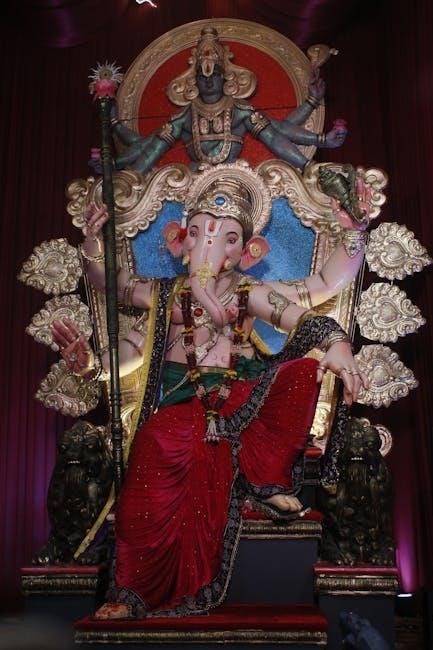
Simon: The Truth Seeker
Simon, the quiet and introspective character, embodies innocence and wisdom. He discovers the truth about the “beast,” realizing it is a dead pilot, symbolizing the true horror of human nature. His solitude and empathy set him apart, and his tragic death at the hands of the boys underscores the novel’s themes of fear, savagery, and the loss of innocence. Simon’s bravery in seeking truth highlights the moral decay of the group, making him a poignant symbol of integrity and the fleeting nature of reason in chaos.
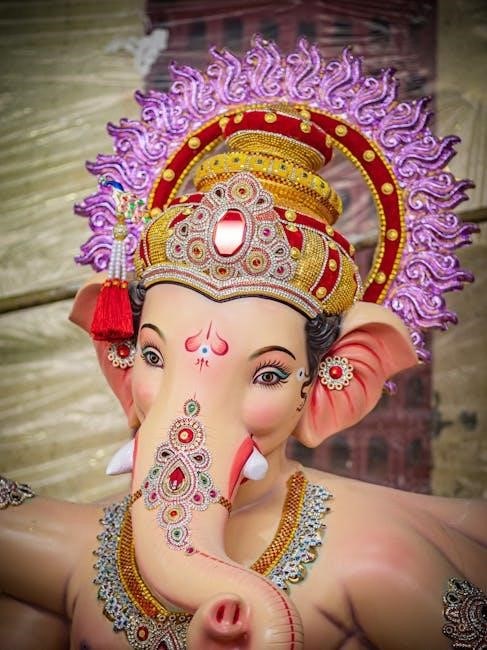
Symbols in the Novel
Symbols are central to exploring human nature in Lord of the Flies. They enrich the narrative, conveying deeper meanings about society, fear, and civilization vs. savagery.
The Conch Shell: Symbol of Order
The conch shell is a powerful symbol of order and democracy in Lord of the Flies. Found by Ralph, it is used to summon meetings and ensure fairness, as only the holder can speak. The shell represents civility and the boys’ attempt to create a structured society. Its importance fades as chaos rises, reflecting the decline of order. The conch’s destruction symbolizes the collapse of democracy and the rise of savagery, emphasizing how symbols of authority are fragile without collective commitment to civilization.
The Beast: Fear and Paranoia
The beast in Lord of the Flies symbolizes the primal fears and paranoia that grip the boys. Initially, it is an unseen creature that sparks terror, but it evolves into a metaphor for the unknown and the boys’ inner savagery. The fear of the beast divides the group, fostering mistrust and chaos. It represents the inherent human fear of the unknown and the breakdown of rational thinking, driving the boys further from civilization and deeper into primal behavior. The beast becomes a unifying yet destructive force, highlighting their vulnerability.
The Island: Isolation and Microcosm
The island in Lord of the Flies serves as both a physical and symbolic setting, representing isolation and a microcosm of society. Stranded without adult supervision, the boys must navigate survival and governance, mirroring human civilization. The island’s beauty contrasts with its dangers, such as the jungle and wildlife, symbolizing the duality of nature. Isolation forces the boys to confront their inner primal instincts, leading to a gradual descent into chaos. The island becomes a stage for human nature’s true revelation, far from societal norms and expectations.
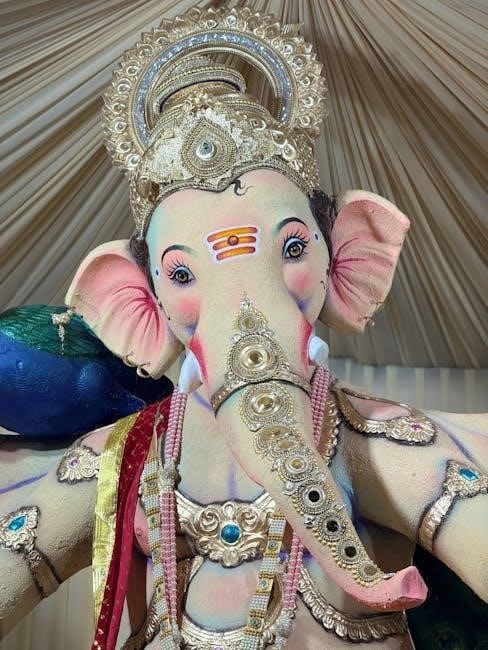
Adaptations and Interpretations
Lord of the Flies has been adapted into films, plays, and radio dramas, each interpretation exploring themes of human nature, savagery, and societal collapse.
TV and Film Adaptations
Lord of the Flies has been adapted into films and TV productions, with the most notable being the 1963 film by Peter Brook and the 1990 version by Harry Hook. Both films capture the novel’s themes of savagery and civilization, with Brook’s adaptation praised for its faithful portrayal of the story. The 1990 film, while more commercial, explores the characters’ descent into chaos. These adaptations highlight the novel’s timeless relevance and provide visual interpretations for audiences. They remain essential resources for studying the novel’s depth and complexity.
Modern Retellings and Influences
Lord of the Flies has inspired modern retellings, including a 2017 stage play adaptation and a planned all-female film remake. Its themes of human nature and survival continue to influence literature, film, and popular culture. The novel’s exploration of societal breakdown is reflected in works like The Hunger Games and The Maze Runner. Its ideas have also shaped psychological studies and discussions on group behavior, proving its enduring relevance in exploring humanity’s darker aspects.

Educational Resources
Educational resources for Lord of the Flies include PDF study guides, e-book formats, and online lesson plans. These materials aid deeper analysis and classroom discussion, offering insights into themes, characters, and symbolism, while providing structured learning tools for students and educators seeking to explore the novel’s complexity and relevance in academic settings.
PDF Availability and Formats
The novel Lord of the Flies is widely available in PDF format, accessible through various online platforms. Many websites offer free downloads, while others provide paid versions with enhanced readability. Readers can choose between scanned copies and professionally converted PDFs, ensuring compatibility with e-readers and mobile devices. Additionally, some editions include annotations, study guides, and introductory essays, making them ideal for academic use. Always ensure downloads are from legal sources to support authors and publishers.
Study Guides and Summaries
Study guides and summaries for Lord of the Flies are essential tools for understanding the novel’s themes, characters, and plot. Popular resources like SparkNotes and CliffsNotes offer detailed chapter summaries, analysis, and critical insights. Many study guides are available in PDF format, providing convenient access for students; These materials often include discussion questions, character maps, and essay prompts, helping readers grasp complex concepts. Modern platforms like LitCharts and Shmoop also provide interactive summaries, enhancing comprehension for learners of all levels.
Online Reading Options
For convenient access, Lord of the Flies is available in various digital formats. Platforms like Project Gutenberg and Google Books offer free e-book versions, while Amazon Kindle and Kobo provide downloadable options. Websites such as PDF Drive and Scribd host PDF versions of the novel, often for free or with a subscription. These online resources enable readers to access the book anytime, making it ideal for students and enthusiasts alike. Many platforms also support multiple devices, ensuring a seamless reading experience.

Reception and Legacy
Lord of the Flies is a literary masterpiece, praised for its exploration of human nature. It received the Nobel Prize in Literature in 1983, solidifying its influence. The PDF version remains widely accessed, ensuring its enduring legacy in modern education and literature. Its themes resonate globally, making it a cornerstone of academic studies and cultural discussions.
Critical Reviews and Analysis
Critics have praised Lord of the Flies for its profound exploration of human nature and society. The novel’s allegorical themes resonate deeply, sparking debates about morality and civilization. Scholars highlight its psychological depth, particularly in characters like Ralph and Jack, symbolizing order and savagery. The PDF version has made the text accessible for global readers, fostering academic analyses and discussions. Critics often note its timeless relevance, as it challenges readers to reflect on humanity’s duality, balancing praise for its literary brilliance with critiques of its darker, unsettling truths.
Awards and Recognition
Lord of the Flies has garnered significant acclaim, earning William Golding the Nobel Prize in Literature in 1983. The novel itself was shortlisted for the Booker Prize in 1980. Its enduring popularity has led to numerous adaptations and translations, solidifying its place in literary history. The PDF version remains a widely accessed format, introducing the story to new generations. Golding’s work continues to be celebrated for its deep exploration of human nature, cementing its status as a classic of 20th-century literature.
Cultural Impact
Lord of the Flies has profoundly influenced literature and popular culture, sparking debates on human nature and societal structures. Its themes are frequently referenced in media, such as TV shows and films, highlighting its enduring relevance. The novel’s inclusion in educational curricula has shaped many students’ understanding of literature and ethics. The PDF format has enhanced its accessibility, contributing to its widespread influence. This accessibility has helped maintain its popularity, ensuring its ideas continue to resonate with new generations, solidifying its role in cultural discourse.
Lord of the Flies remains a timeless exploration of human nature, society, and morality. The PDF format ensures its accessibility, preserving its impact for modern readers and scholars alike.
Final Thoughts on the Novel
Lord of the Flies is a timeless tale that explores the depths of human nature, society, and morality. Its themes of civilization vs. savagery and the effects of fear resonate deeply. The novel serves as a powerful educational tool, sparking critical thinking about humanity’s duality. The availability of the novel in PDF format ensures its accessibility for modern readers, making it easier to engage with Golding’s profound insights. As a result, the story remains a crucial piece of literature, continuing to influence and challenge readers worldwide.
Relevance in Modern Times
Despite being written decades ago, Lord of the Flies remains highly relevant in modern times. Its exploration of human nature, societal collapse, and power struggles aligns with contemporary issues like political polarization and social unrest. The novel’s themes of fear, control, and morality are timeless, offering insights into human behavior. The availability of the novel in PDF format ensures its accessibility to new generations, making it a vital resource for understanding universal challenges and fostering critical thinking about humanity’s complexities.
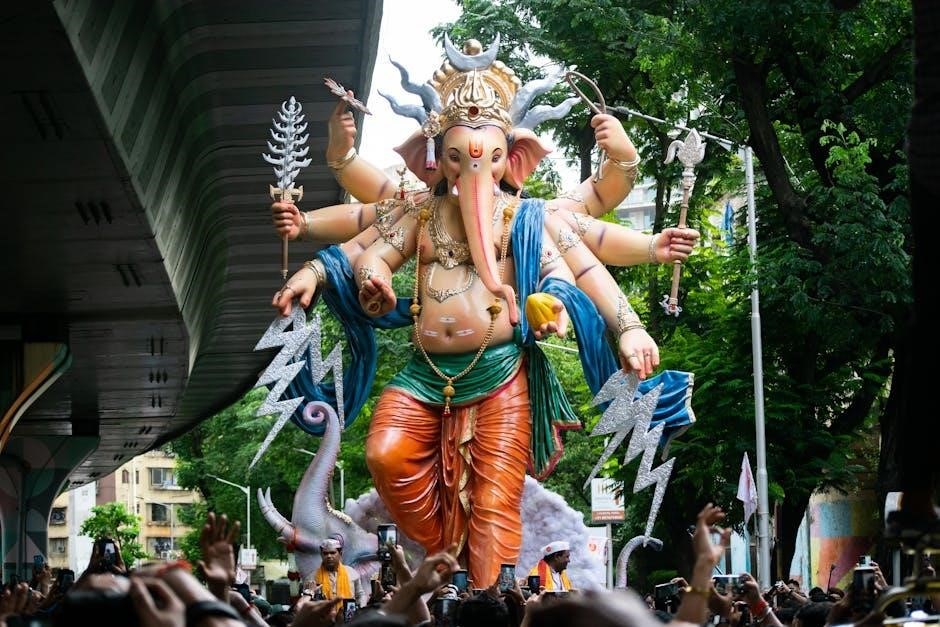
References
For the PDF version of Lord of the Flies, refer to official publisher sites like Penguin Books or academic databases such as Google Scholar or JSTOR. Ensure sources are credible and cite ISBN-13: 978-0061120094 for accurate referencing in essays or studies.
Recommended Reading
For a deeper understanding, explore Lord of the Flies through literary analyses and companion books. William Golding’s other works, like The Inheritors, offer insights into his thematic style. PDFs of Lord of the Flies are widely available on educational platforms like Google Books or course reserves. Supplements such as SparkNotes or CliffsNotes provide detailed summaries and interpretations. Additionally, scholarly articles on human nature and societal themes enrich the reading experience, making the novel a timeless educational resource for students and literature enthusiasts alike.
Academic Sources

Access scholarly analyses of Lord of the Flies through respected academic databases like JSTOR and Google Scholar. These platforms offer PDFs of peer-reviewed articles and essays that delve into themes, characters, and symbolism. Search for terms like “Golding Lord of the Flies analysis” to find insightful studies. Academic sources provide a critical lens, exploring the novel’s exploration of human nature and societal structures. They are invaluable for students and researchers seeking a deeper, evidence-based understanding of the text.